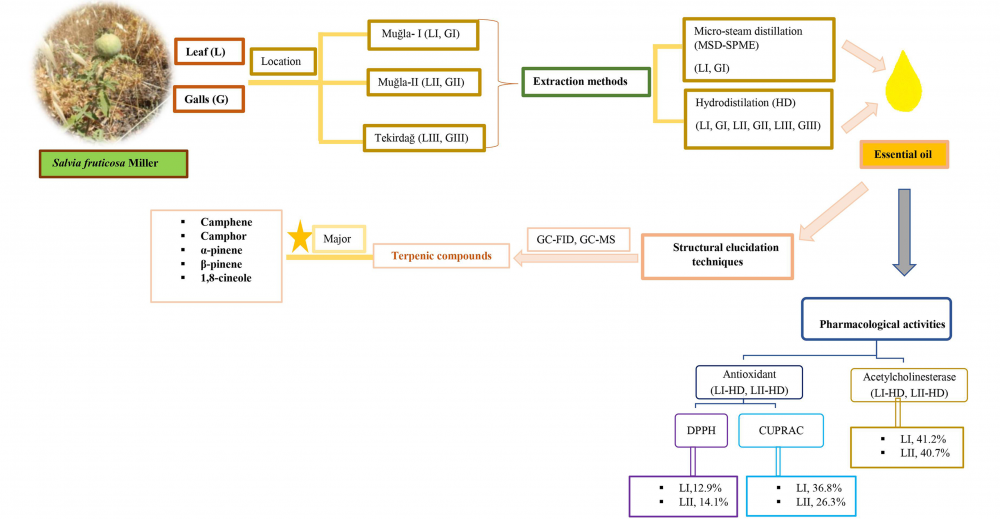JOURNAL 1579
Records of Natural Products
Year: 2021 Issue: 1 January-February
p.10 - 24
Viewed 4838 times.
-
Sevda Süzgeç Selçuk

-
Temel Ozek

-
Gulmira Özek

-
Süleyman Yur

-
Fatih Göger

-
Bahar Gürdal

-
Gizem Gülsoy Toplan

-
Ali H. Meriçli

-
Kemal H. C. Baser

GRAPHICAL ABSTRACT

ABSTRACT
In this study two different extraction techniques namely, conventional hydrodistillation (HD) and micro-steam distillation-solid-phase microextraction (MSD-SPME), were used to analyze the volatile constituents from the leaves and the galls of Salvia fruticosa Mill. by gas chromatography (GC-FID) and gas chromatography coupled to mass spectrometry (GC-MS). The oxygenated monoterpenes (62.4-69.3%) were found to be predominating compound group with 1,8-cineole and camphor as the main constituents in all the tested samples with the exception of the gall oil in which oxygenated sesquiterpenes (25.6%) and diterpenes (17.3%) were detected in high percentages. Qualitative differences of the volatiles obtained by HD and MSD-SPME techniques from the leaf and the galls are discussed. The resulting leaf essential oils were evaluated for their in vitro acetylcholinesterase (AChE) inhibition potential. In vitro DPPH scavenging, and Cupric Reducing Antioxidant Capacity (CUPRAC) assays were used to evaluate the leaf essential oils. AChE inhibition 41.2% and antioxidant 36.8% assays results showed moderate levels of activity. In this present study, to the best of our knowledge comparative leaf and gall volatiles of S. fruticosa was reported for first time.
KEYWORDS- Salvia fruticosa
- galls
- acetylcholinesterase
- antioxidant
- SPME
- GC-MS